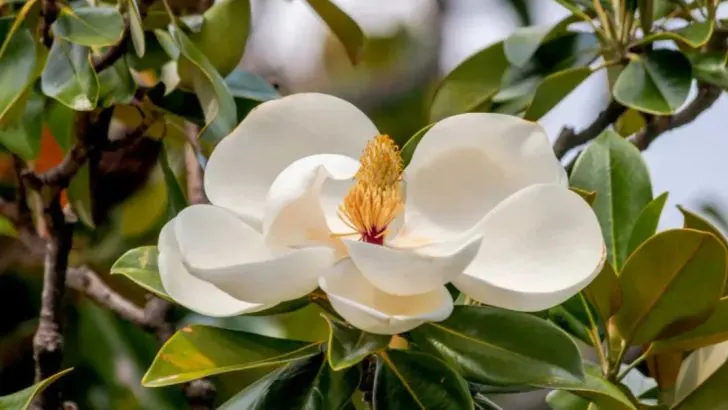Native plants are the key to a thriving, low-maintenance Southern garden. They’re adapted to the region’s climate, support local wildlife, and require less water and care. These 18 native plants will bring beauty, resilience, and biodiversity to your Southern landscape.
Coral Honeysuckle
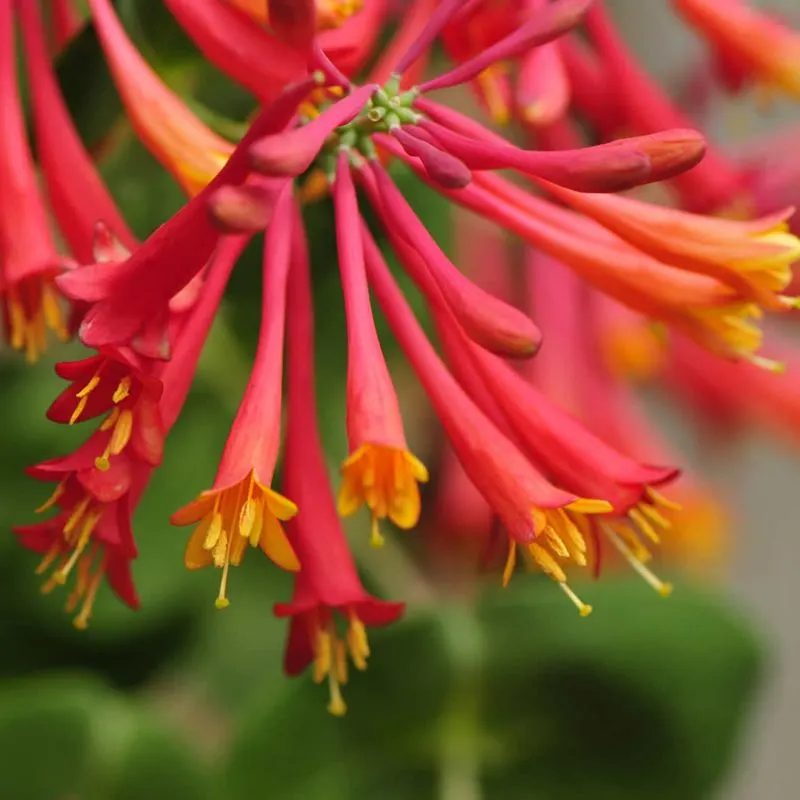
Clusters of tubular red flowers attract hummingbirds and butterflies, making it a favorite for wildlife enthusiasts. This vine thrives in full sun to partial shade and can quickly climb trellises or fences, adding vertical interest to your garden. Coral Honeysuckle is a perennial, ensuring year-round beauty with minimal effort. Its drought resistance means less watering during dry spells, a boon for busy gardeners. Place it where its fragrant blooms can be enjoyed up close, perhaps near a seating area or along a walkway. With its adaptability and charm, this native vine is a must-have.
Southern Magnolia
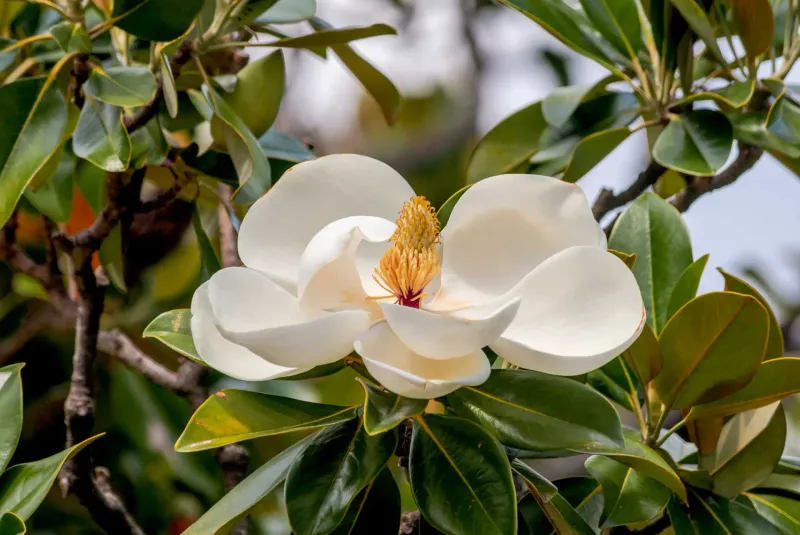
Known for its large, fragrant white flowers and glossy green leaves, the Southern Magnolia is an icon of the South. This evergreen tree provides shade and elegance, with a height that can reach up to 80 feet. Plant it as a focal point in your yard, where its beauty can be admired year-round. While it can tolerate some drought, it thrives in well-drained soil with regular watering. The Southern Magnolia’s grandeur and resilience make it a timeless addition to any landscape. Its blossoms are not just eye-catching but also add a sweet fragrance to the air.
Purple Coneflower
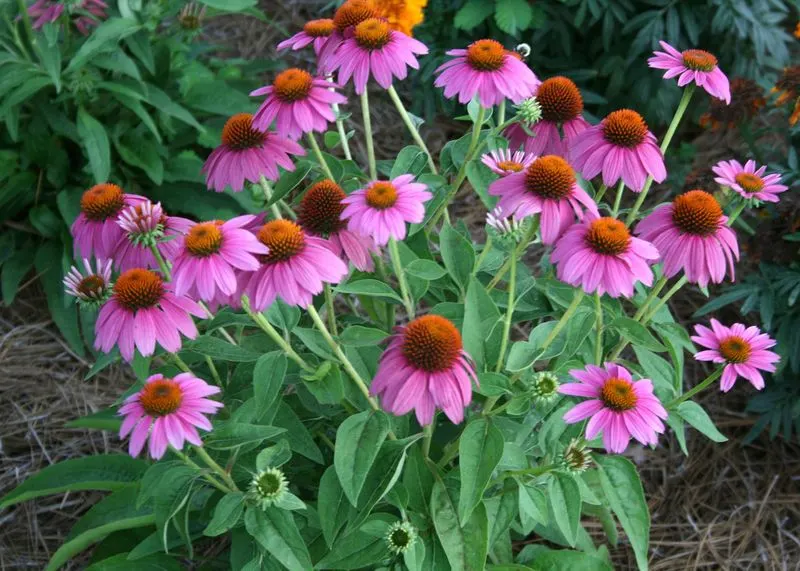
These hardy perennials are beloved for their striking purple petals and prominent orange-brown centers. Purple Coneflowers are easy to grow and drought-resistant, making them ideal for low-maintenance gardens. Plant them in full sun for the best flower production, and enjoy their long-lasting blooms from summer into fall. They’re also great for attracting pollinators like bees and butterflies, supporting your local ecosystem. Consider using them in borders or wildflower gardens for a natural look. With their resilience and vivid color, Purple Coneflowers are a gardener’s delight.
Black-Eyed Susan
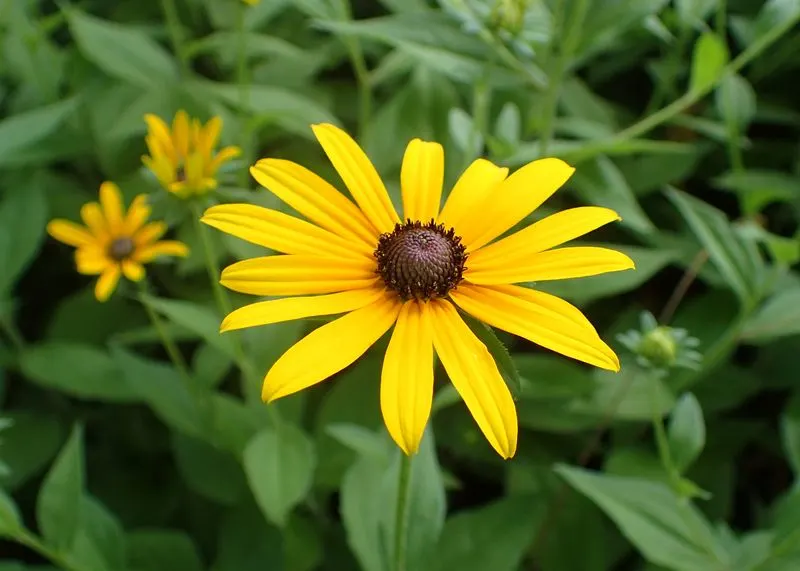
Bright yellow petals surrounding dark brown centers give Black-Eyed Susans their cheerful appearance. These perennials are excellent for pollinator gardens, attracting bees and butterflies. They’re easy to grow, thriving in full sun and adaptable to various soil types. Use them to create colorful borders or in mass plantings for a stunning visual effect. The blooms last from summer through fall, offering extended seasonal interest. Black-Eyed Susans also make great cut flowers, adding sunshine to indoor arrangements. Their vibrant color and ease of care make them a popular choice for Southern gardens.
American Beautyberry
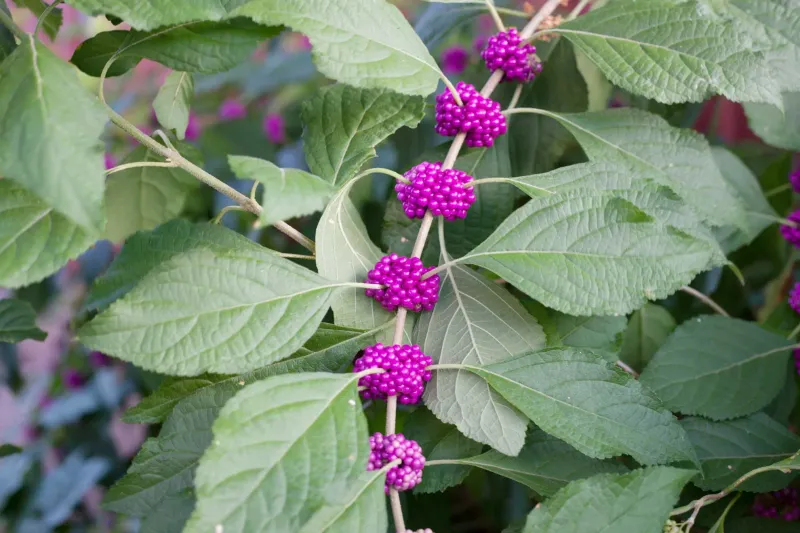
Clusters of bright purple berries make the American Beautyberry a standout in any garden. This deciduous shrub not only provides visual interest but also attracts birds who feast on its fruits. It thrives in part shade to full sun and is tolerant of a variety of soil conditions. Use it as a specimen plant or in mixed shrub borders for added texture and color. The berries last into winter, providing food for wildlife during colder months. Prune it back in late winter to encourage new growth. Its unique appearance and ecological benefits make it a garden favorite.
Virginia Sweetspire
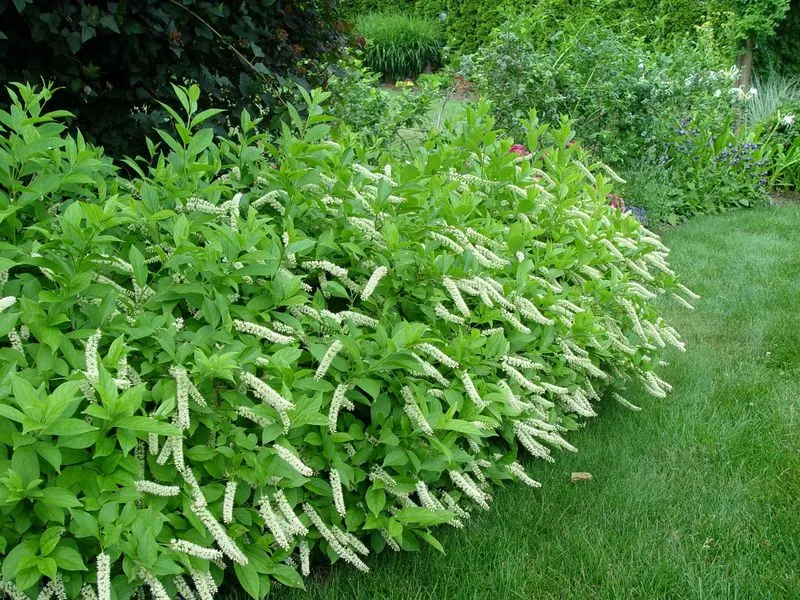
Graceful, arching branches covered in white flower spikes characterize Virginia Sweetspire. This shrub is perfect for damp areas of your garden, thriving in moist, well-drained soil. It’s adaptable to sun or shade, providing versatility in garden design. In autumn, its leaves turn a brilliant red, offering a seasonal show of color. Use it in mass plantings or as a border plant for a lush, full look. Virginia Sweetspire is also deer-resistant, an added bonus for rural gardeners. Its beauty and adaptability make it a versatile choice for enhancing any garden space.
Eastern Redbud
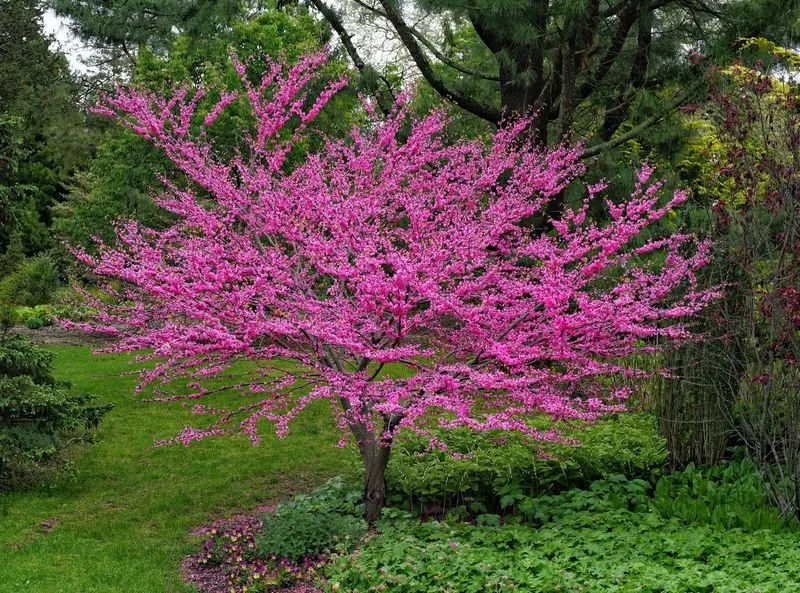
Small pink blossoms cover the branches of the Eastern Redbud in early spring, heralding the arrival of warmer weather. This small tree is well-suited to various garden styles, from formal to informal, and can be used as a specimen or understory tree. It prefers well-drained soil and full sun to partial shade for optimal growth. The heart-shaped leaves that follow the blooms add an additional layer of interest. Its moderate size makes it suitable for smaller yards, while its seasonal interest and adaptability make it a valuable addition to larger landscapes. The Eastern Redbud is truly a springtime gem.
Yellow Jessamine
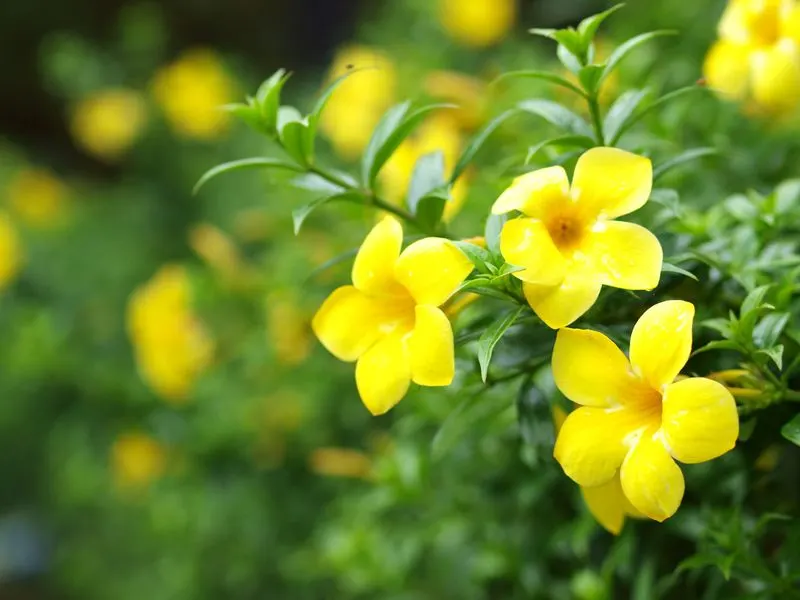
Bright yellow, trumpet-shaped flowers make Yellow Jessamine a vibrant choice for a climbing vine. This evergreen vine is perfect for adding color to fences, trellises, or arbors. It thrives in full sun to partial shade, blooming from late winter into spring. Its fragrant flowers attract hummingbirds and butterflies, adding life to your garden. While it’s drought-tolerant once established, regular watering during dry spells encourages more prolific blooming. Be cautious, as all parts of the plant are toxic if ingested. Despite this, its beauty and wildlife benefits make it a cherished choice for Southern gardens.
Swamp Milkweed
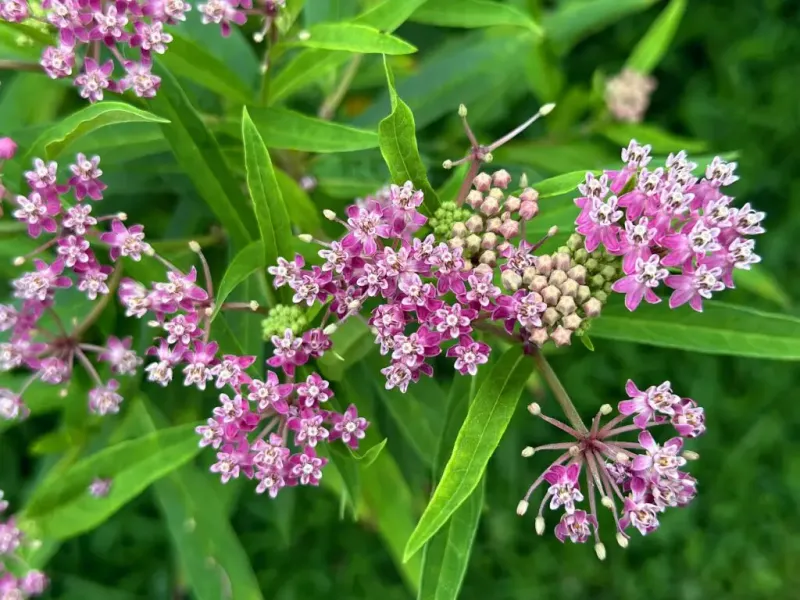
Swamp Milkweed is essential for those looking to support monarch butterflies, as it serves as both a host and nectar plant. Clusters of pink flowers bloom from mid-summer to early fall, attracting a variety of pollinators. It thrives in wet conditions, making it ideal for rain gardens or alongside ponds. Though it prefers sun, it can tolerate some shade, offering flexibility in planting locations. Its narrow leaves and upright habit add vertical interest to planting schemes. With its ecological importance and attractive blooms, Swamp Milkweed is both a functional and beautiful addition to gardens.
Carolina Jessamine
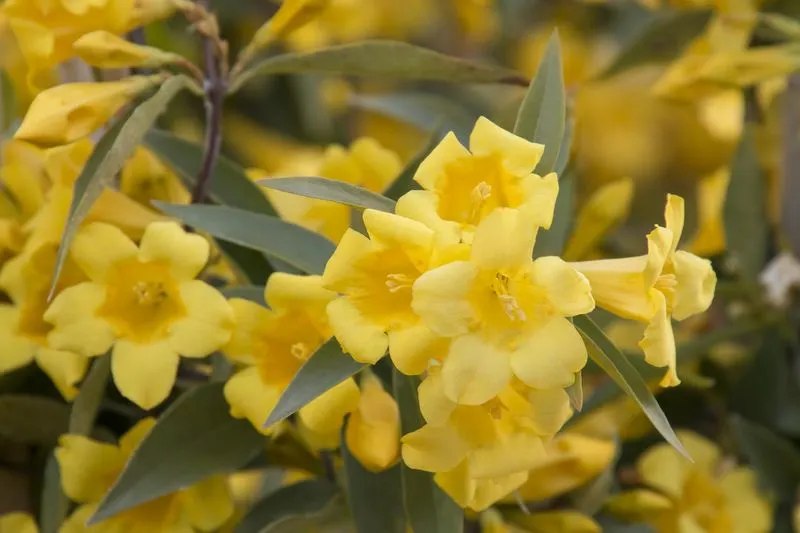
Carolina Jessamine offers a burst of sunshine with its yellow trumpet-shaped flowers. This evergreen vine is versatile, suitable for arbors, fences, and trellises. Plant it in full sun to partial shade for best results, where it can brighten up any space from late winter to spring. Its fragrance is a bonus, drawing in pollinators like hummingbirds. While it is a hardy and fast-growing option, care should be taken since all parts are toxic if consumed. Despite this caution, its visual appeal and low maintenance make it a sought-after plant for Southern gardeners.
Butterfly Weed
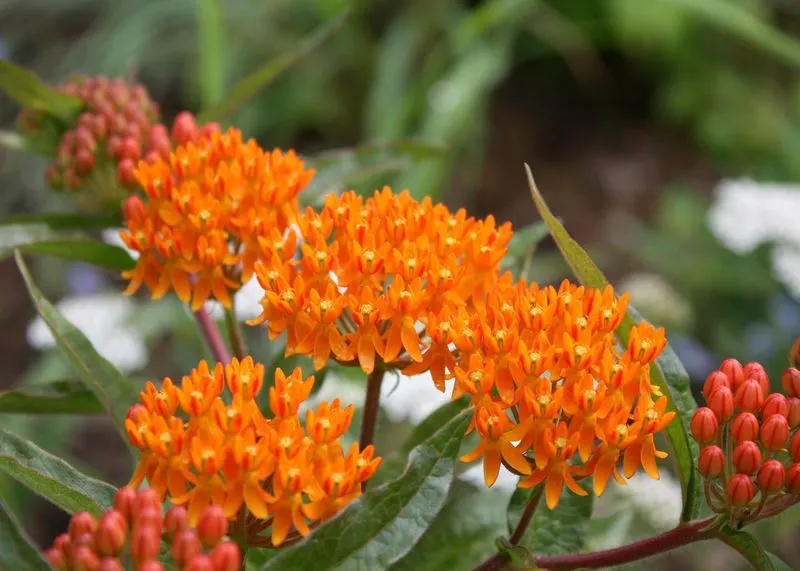
Vibrant orange flowers make Butterfly Weed a standout in any garden. This perennial is not only beautiful but also beneficial, attracting a variety of pollinators, including monarch butterflies. It thrives in well-drained soil and full sun, making it a low-maintenance choice for sunny borders or wildflower gardens. Its deep taproot allows it to withstand drought conditions, reducing the need for frequent watering. Butterfly Weed’s bright blooms and ecological contributions make it a valuable plant for supporting local wildlife while adding a pop of color. It’s an excellent choice for those seeking a hardy, attractive garden addition.
Spicebush
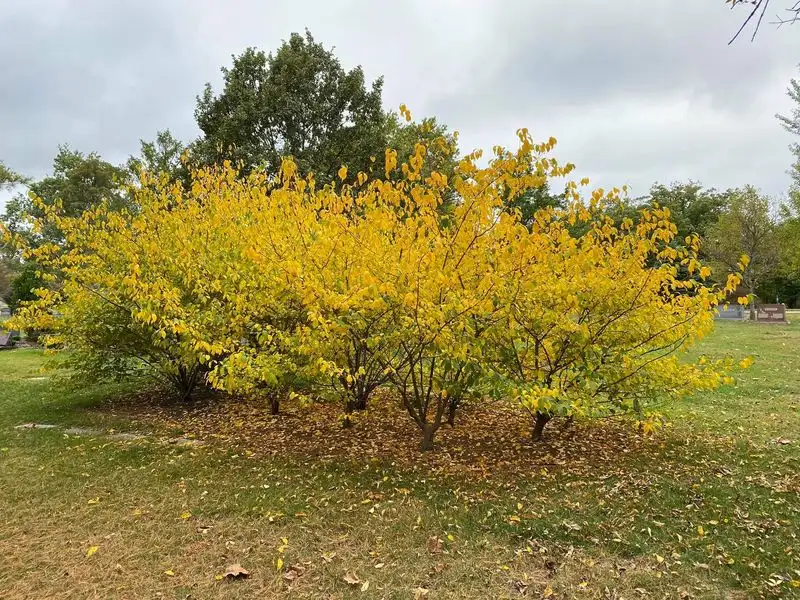
Spicebush brings a subtle beauty to shaded areas with its clusters of small yellow flowers. This deciduous shrub thrives in moist, well-drained soil and offers year-round interest. Its leaves and twigs release a spicy aroma when crushed, adding sensory delight to your garden. In late summer, red berries appear, attracting birds and wildlife. Spicebush is also a host plant for the spicebush swallowtail butterfly, contributing to local biodiversity. Use it in woodland gardens or as an understory plant for added texture. Its ecological value and understated charm make it a gardener’s ally.
Eastern Bluestar
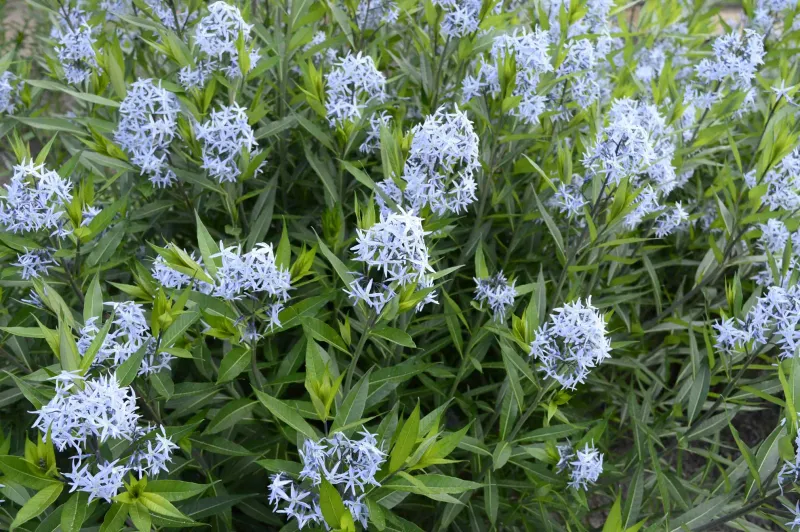
Clusters of pale blue, star-shaped flowers give Eastern Bluestar its name. This perennial is not only visually appealing but also highly adaptable, growing well in full sun to partial shade and tolerating a variety of soil types. Its compact, bushy form makes it suitable for borders or mass plantings. The foliage turns a golden yellow in the fall, adding seasonal interest. Eastern Bluestar is also deer-resistant, making it a practical choice for areas with browsing wildlife. Its long-lasting blooms and easy-care nature make it an excellent addition to any garden.
Cardinal Flower
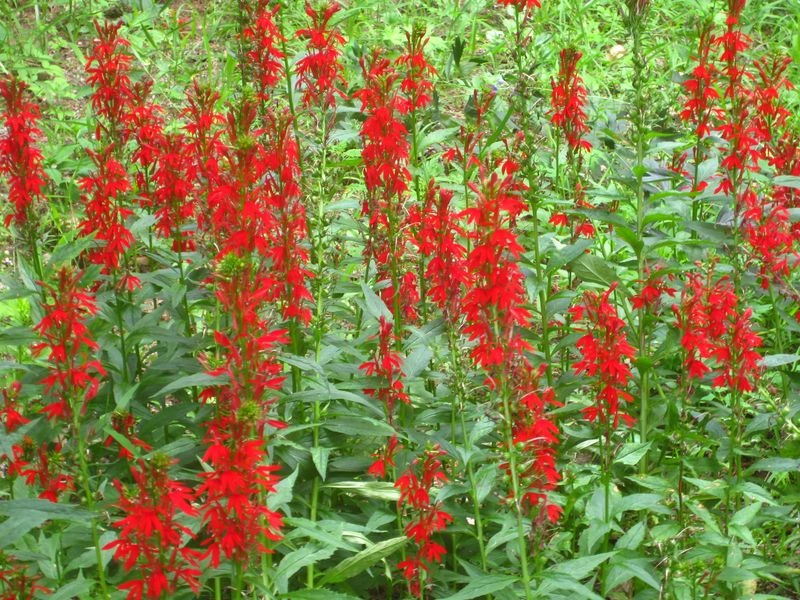
Striking red tubular flowers make the Cardinal Flower a favorite among hummingbirds and garden enthusiasts alike. This perennial thrives in moist, rich soil and does best in areas that receive morning sun and afternoon shade. Its tall flower spikes add vertical interest, making it ideal for planting near water features or in rain gardens. While it requires consistent moisture, the effort is rewarded with stunning blooms that last from mid-summer into fall. Cardinal Flower’s vibrant color and wildlife appeal make it a standout choice for gardeners looking to make an impact.
Wild Bergamot
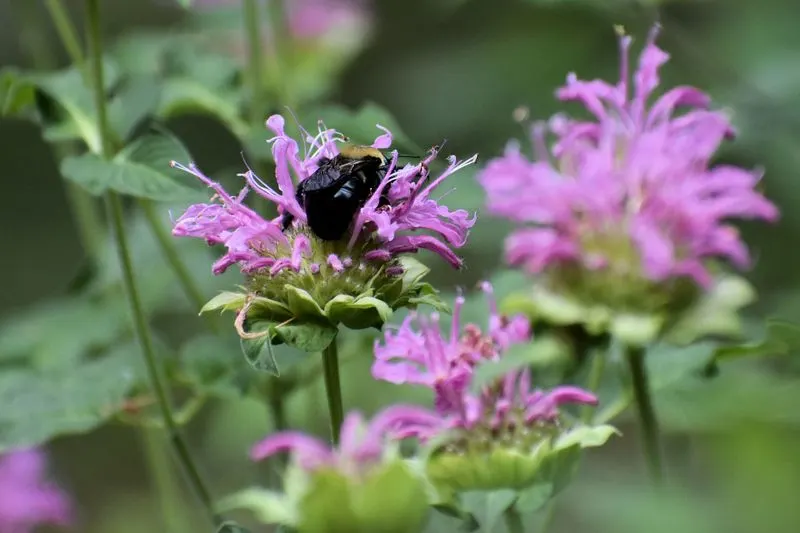
Delicate pinkish-purple flowers and aromatic leaves make Wild Bergamot a garden favorite. This perennial is a magnet for bees and butterflies, offering both nectar and beauty from mid-summer to early fall. It thrives in full sun and well-drained soil, adding charm to meadow gardens and borders. Wild Bergamot is also known for its resilience, tolerating drought once established. Its fragrant foliage can be used in teas, providing an added bonus for gardeners. With its combination of beauty, fragrance, and ecological benefits, Wild Bergamot is a must-have for any nature-friendly garden.
Joe-Pye Weed
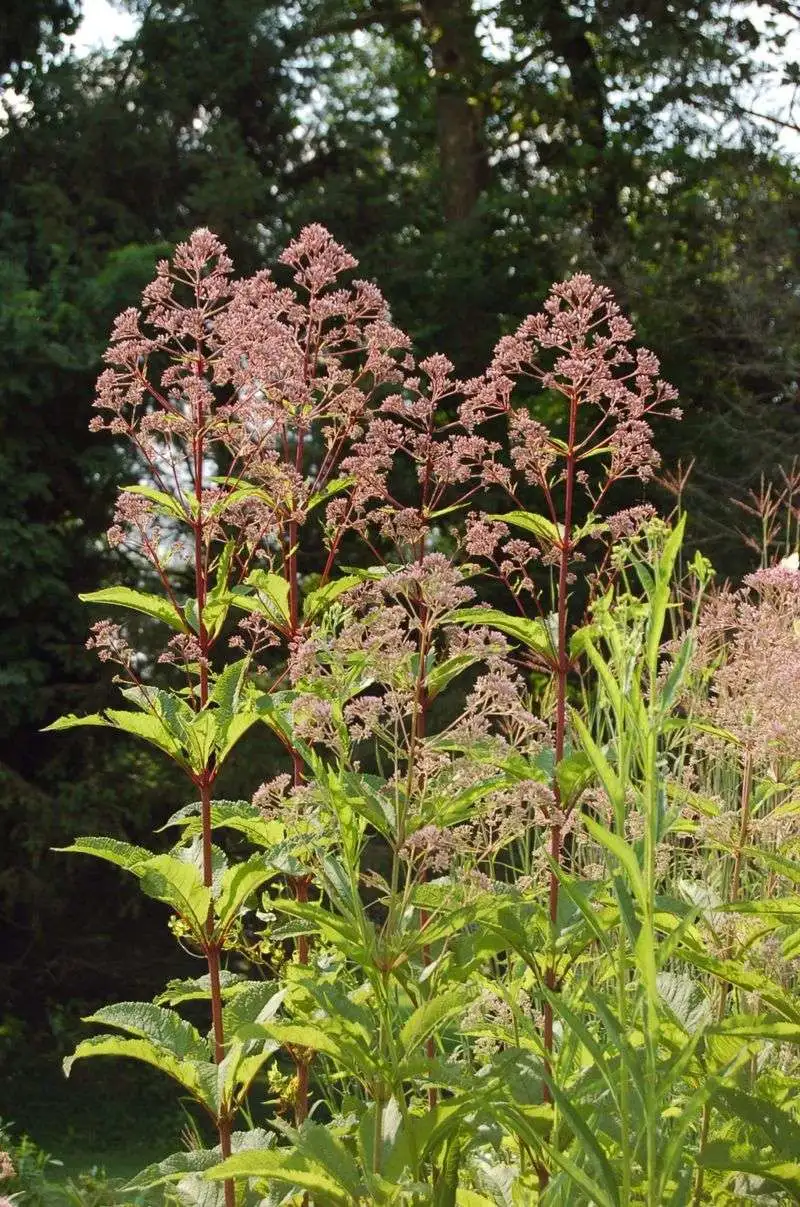
Clusters of purple-pink flowers atop tall stems make Joe-Pye Weed an eye-catching addition to any garden. This perennial thrives in full sun and moist soil, ideal for rain gardens or beside ponds. Its height adds architectural interest, creating an impressive backdrop for shorter plants. Joe-Pye Weed is also a magnet for pollinators, including bees and butterflies, enhancing biodiversity in your garden. Though it requires consistent moisture, its stunning blooms from late summer into fall reward the extra care. Its beauty and ecological benefits make it a cherished choice for gardeners.
Blue Wild Indigo
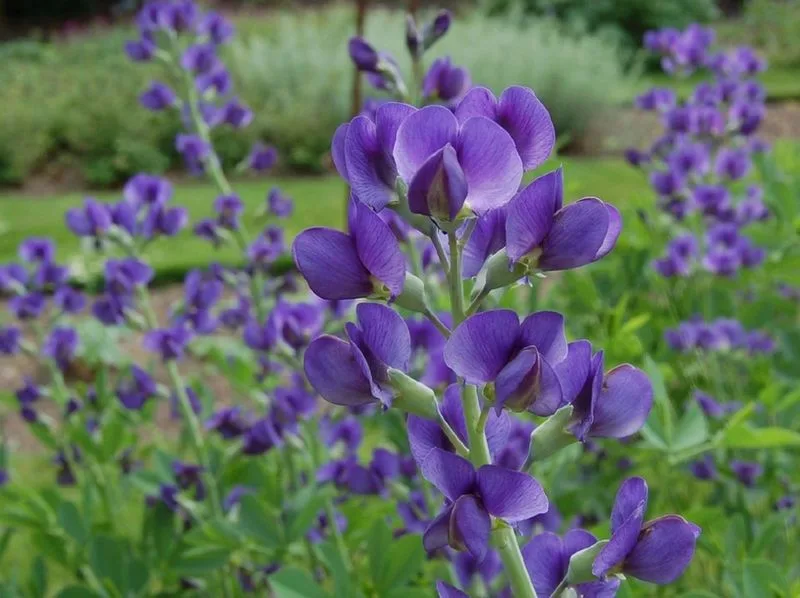
Spikes of blue-purple flowers give Blue Wild Indigo its striking appearance. This perennial is a tough and drought-tolerant choice for sunny spots in your garden. It’s slow to mature but well worth the wait, with blooms appearing in late spring and lasting into early summer. Blue Wild Indigo’s deep roots make it resilient during dry periods, requiring minimal watering once established. Its unique color and form provide a lovely contrast in borders or wildflower gardens. This plant’s low maintenance and beauty make it a practical and attractive addition to any Southern garden.
Scarlet Sage
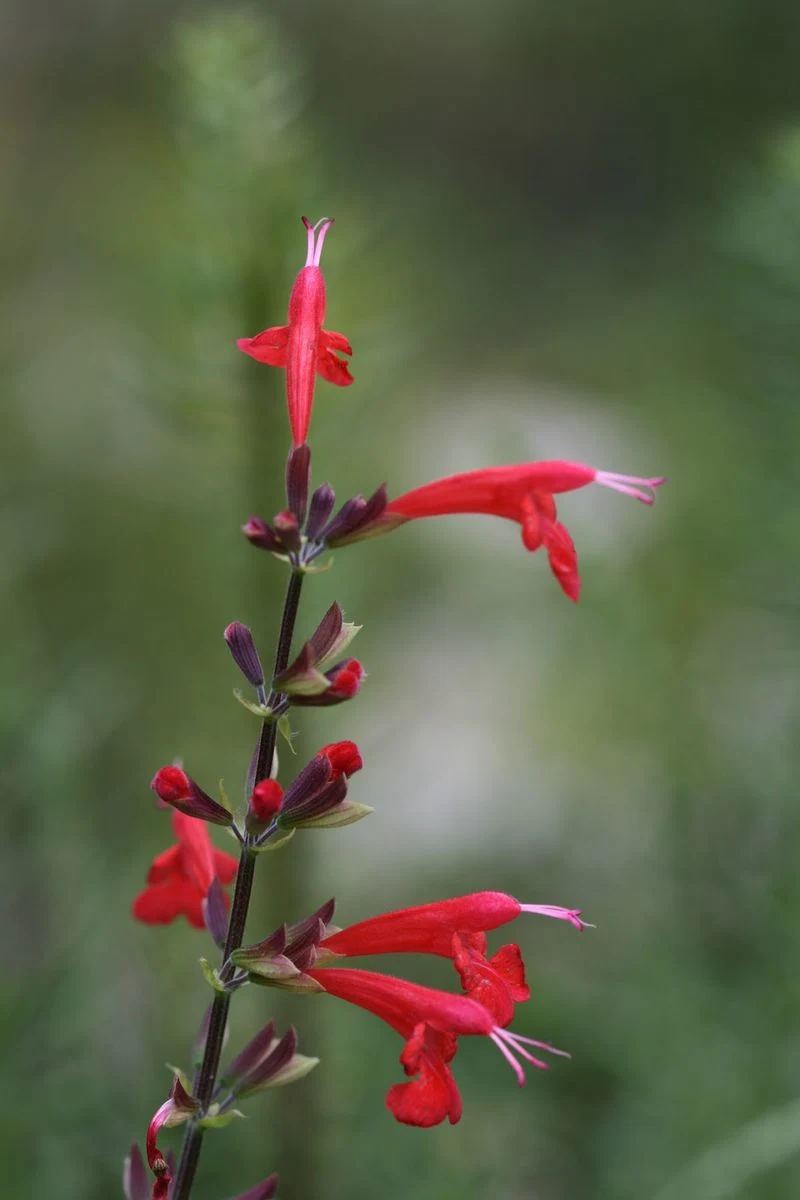
Vibrant red flowers make Scarlet Sage a standout choice for brightening your garden. This perennial thrives in full sun and well-drained soil, perfect for borders and mass plantings. It’s a favorite of hummingbirds and butterflies, adding life and movement to your garden space. Scarlet Sage is also drought-tolerant, reducing the need for frequent watering. Its extended blooming season from late spring into fall ensures continuous color and interest. With its brilliant flowers and ecological benefits, Scarlet Sage is a versatile plant that offers both beauty and function. It’s a must-have for a lively garden.

